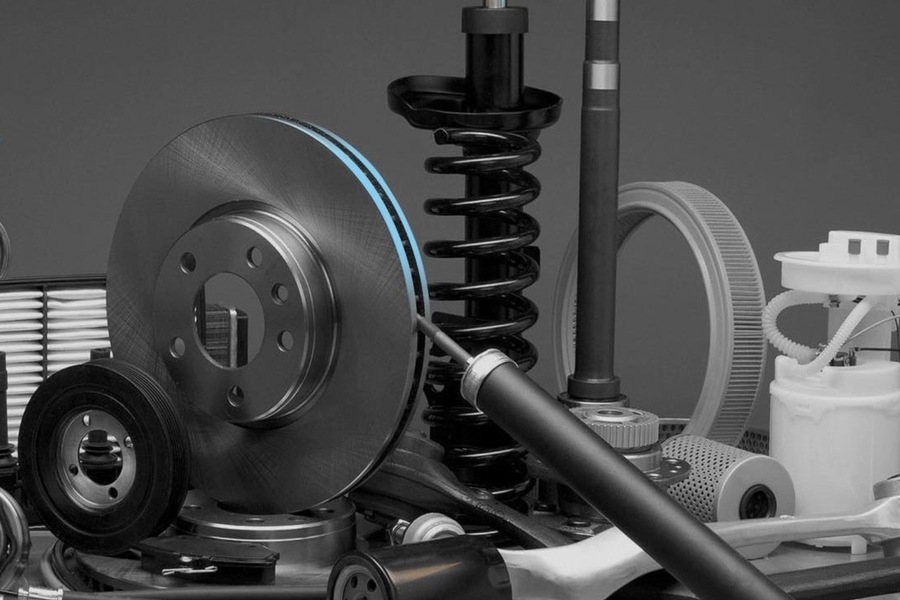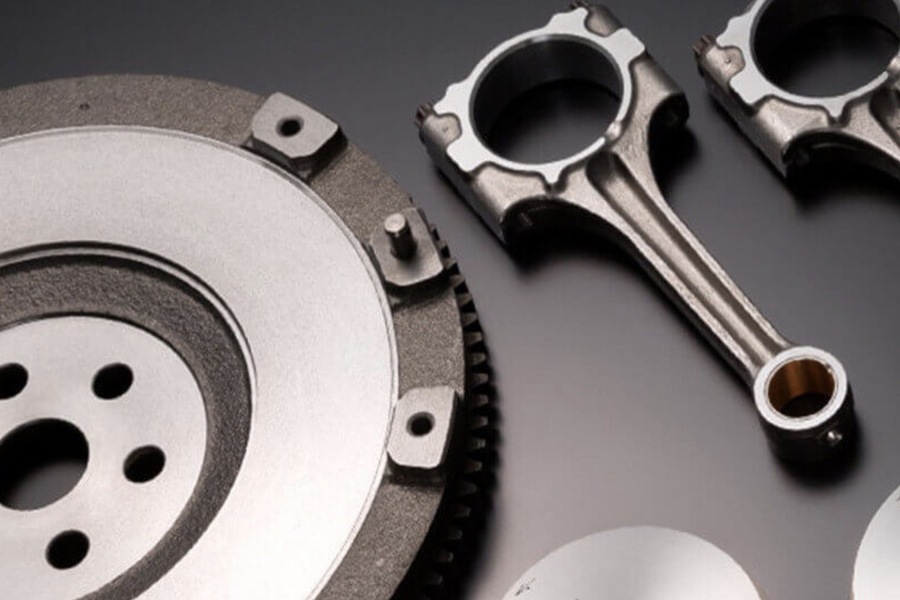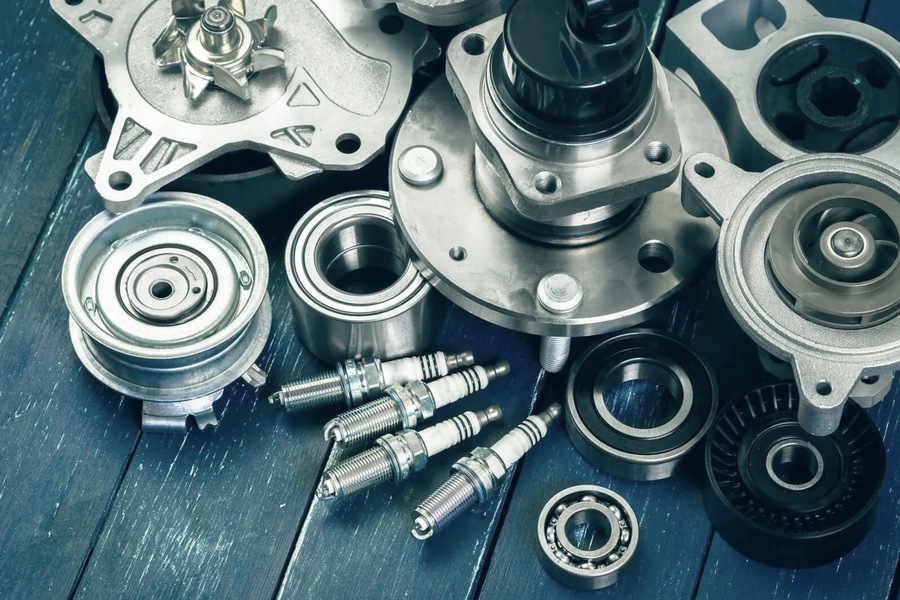Every car, including Mazda models, requires regular maintenance and, over time, occasional repairs. This inevitable aspect of car ownership raises an important question for drivers: Which spare parts should you use? The modern market offers a vast selection of parts, from Mazda genuine spare parts to a wide range of analogues, often at significantly different price points. At first glance, many of these parts seem identical, differing only in brand and cost, sometimes varying several-fold or even by an order of magnitude.
Choosing the right spare parts for your Mazda involves weighing the benefits of genuine parts against the potential cost savings of alternatives. To make an informed decision, it’s essential to understand what genuine parts are, how they differ from non-original components, and the implications of choosing one over the other.
What Are Genuine Spare Parts?
Genuine Mazda spare parts are components produced by Mazda or by specialized suppliers under Mazda’s strict quality control. These suppliers manufacture parts according to the technical specifications laid out by the automaker. In other words, genuine parts are identical to the components used to build your car on the production line. These parts undergo the same rigorous testing and are subject to the same quality assurance standards as the parts originally installed in your vehicle.
In some cases, Mazda might also offer special repair kits designed for specific situations. These kits are often created to help with repairs where factory-level assembly technology cannot be easily replicated. For instance, certain parts that are installed as complete units during production might need to be repaired differently during maintenance, and Mazda’s special repair kits are developed with this in mind.
Why Does Mazda Produce Genuine Spare Parts?
Car manufacturers like Mazda produce parts not only for initial assembly but also to meet future maintenance needs. After a new car model is launched, manufacturers must ensure that spare parts are available for maintenance and warranty repairs at authorized dealerships. Moreover, Mazda is obligated to provide spare parts for post-warranty repairs even after a model is discontinued, ensuring that older vehicles can be serviced and repaired with high-quality, reliable components.

Advantages and Disadvantages of Genuine Mazda Parts
Advantages of Genuine Mazda Parts:
- Reliability and Performance
The primary reason to choose genuine Mazda parts is their reliability. These parts are designed and tested by Mazda to meet strict standards, ensuring that they perform exactly as intended. When you use original parts, you can be confident that they will fit perfectly, perform optimally, and last longer than most non-original alternatives. - Quality Assurance
Mazda guarantees the quality of its genuine parts. Many come with a manufacturer’s warranty, often extending up to two years. This warranty reflects Mazda’s confidence in the durability and performance of its parts, providing peace of mind to the vehicle owner. - Perfect Fit and Compatibility
Since genuine parts are the same as those used on the factory line, they are designed to match the exact specifications of your Mazda vehicle. This reduces the risk of compatibility issues, incorrect fitment, or malfunctions. When you buy genuine Mazda parts, you can be sure that they will integrate seamlessly into your car’s systems without any modifications. - Updated Designs
In some cases, Mazda may update or improve certain parts after a model’s release. If there are design changes to a component, Mazda will update the part number and provide detailed information in the official parts catalog. This ensures that you can always find the latest, most efficient version of any part, even if the original design has been improved or replaced.
Disadvantages of Genuine Mazda Parts:
- Higher Cost
The most significant downside of genuine parts is their cost. Original Mazda parts are often considerably more expensive than aftermarket alternatives. While this extra cost reflects their superior quality, it can be prohibitive for car owners on a tight budget. - Availability
Genuine parts may not always be readily available, especially for older models or in regions with limited dealership networks. This can result in delays in servicing or repairs if parts need to be ordered directly from Mazda or a certified supplier.
How to Identify Genuine Mazda Parts
Given the prevalence of counterfeit parts in the market, it’s important to know how to distinguish genuine Mazda components from fakes. Here are a few indicators that can help you identify authentic Mazda parts:
– Packaging
Genuine Mazda parts are packaged in official packaging that includes a unique part number. This number is vital for ensuring that the part is compatible with your vehicle’s specifications.
– Markings and Symbols
Genuine parts often feature cast or stamped Mazda logos or symbols. These are typically present on the part itself, offering a visual confirmation of authenticity.
– Laser Engraving
Many genuine parts include laser-engraved details, such as part numbers, logos, or batch numbers. These engravings are difficult to replicate and are a sign of authenticity.
– Paint Printing
High-quality paint printing, especially on electrical components or sensors, can be another clue that the part is genuine.
– QR Code
Many modern parts feature a QR code that can be scanned to verify the part’s authenticity. This is a newer technology that Mazda has begun implementing to help protect consumers from counterfeit parts.
What Are Non-Original Spare Parts?
Non-original or aftermarket spare parts make up the bulk of the automotive parts market. These parts are manufactured by third-party companies that are not directly affiliated with Mazda, but which produce components that are compatible with Mazda vehicles. The quality of these parts can vary widely, from high-quality alternatives to substandard knockoffs, making it essential to choose reputable brands.
Types of Non-Original Parts
- OEM (Original Equipment Manufacturer) Parts
These parts are made by the same companies that supply Mazda with parts for vehicle assembly. However, they are sold under the manufacturer’s own brand name rather than Mazda’s. OEM parts are often of comparable quality to genuine parts but come at a lower price. - Aftermarket Parts
These parts are produced by independent manufacturers and are designed to be compatible with various vehicle models. While many reputable brands offer high-quality aftermarket parts, others may produce components that do not meet the same standards as genuine parts. It’s important to research the manufacturer before making a purchase. - Private Label Brands
Some companies purchase generic parts, repackage them, and sell them under their own brand names. These parts are typically inexpensive but may vary greatly in quality. - Counterfeit Parts
Unfortunately, the market is also flooded with counterfeit parts that mimic the appearance of genuine parts but fail to meet the same quality standards. Counterfeit parts are often made from subpar materials and can pose serious risks to the performance and safety of your vehicle.
How to Spot Low-Quality Spare Parts
When shopping for spare parts, especially from non-original sources, it’s crucial to avoid low-quality or counterfeit components. Here are some red flags to watch out for:
Inconsistent Markings
Counterfeit parts often have poorly executed logos, markings, or batch numbers that are inconsistent with genuine parts.
Cheap Packaging
Low-quality packaging, missing labels, or poorly printed text can be a sign that the part is not genuine.
Weight and Material
Genuine parts are often made from high-quality materials, making them heavier and more durable than their counterfeit counterparts. If a part feels unusually light or flimsy, it could be a fake.
Fit and Finish
Low-quality parts may not fit properly or may have rough finishes, indicating poor manufacturing practices.

Should You Choose Genuine Mazda Parts or Analogues?
The decision between using genuine Mazda spare parts or analogues depends largely on your budget, the availability of parts, and the importance of the component being replaced.
Use Genuine Parts for Critical Systems
If your budget allows and the part in question is crucial to the vehicle’s performance or safety, it’s always best to opt for genuine Mazda parts. For components such as the engine, transmission, brake system, and safety equipment, using non-original parts can introduce unnecessary risks. Even small discrepancies in the design or material of these parts can lead to premature failure, increased wear, or, in the worst-case scenario, accidents.
Consider Analogues for Non-Essential Components
For less critical areas, such as suspension components, body parts, or interior trim, high-quality aftermarket parts can provide a cost-effective alternative. In some cases, aftermarket parts may offer additional features or improved performance over the original part, such as upgraded bushings or reinforced materials.
Additionally, aftermarket parts can sometimes be more convenient, especially when original parts are sold as complete assemblies. For example, Mazda may only sell an entire suspension strut assembly, while an aftermarket supplier offers the bushings separately, allowing you to save money by replacing only the worn component.
Avoid Low-Quality and Counterfeit Parts:
While aftermarket parts can provide value, it’s important to avoid low-quality knockoffs, particularly for components related to braking, steering, or safety systems. Cheap alternatives may save you money upfront, but they can compromise the safety and reliability of your vehicle, leading to more expensive repairs down the road.
Conclusion
When it comes to maintaining and repairing your Mazda, choosing the right spare parts is essential to ensure the longevity, performance, and safety of your vehicle. While genuine Mazda parts offer the highest level of quality, reliability, and fitment, they can be expensive. On the other hand, high-quality aftermarket parts can provide a more budget-friendly option without sacrificing too much in terms of performance, especially for less critical components.
Ultimately, the best choice depends on your specific needs, budget, and the part being replaced. However, for key systems like the engine, brakes, and transmission, it’s always best to stick with genuine parts to avoid potential risks and maintain your Mazda in peak condition.

